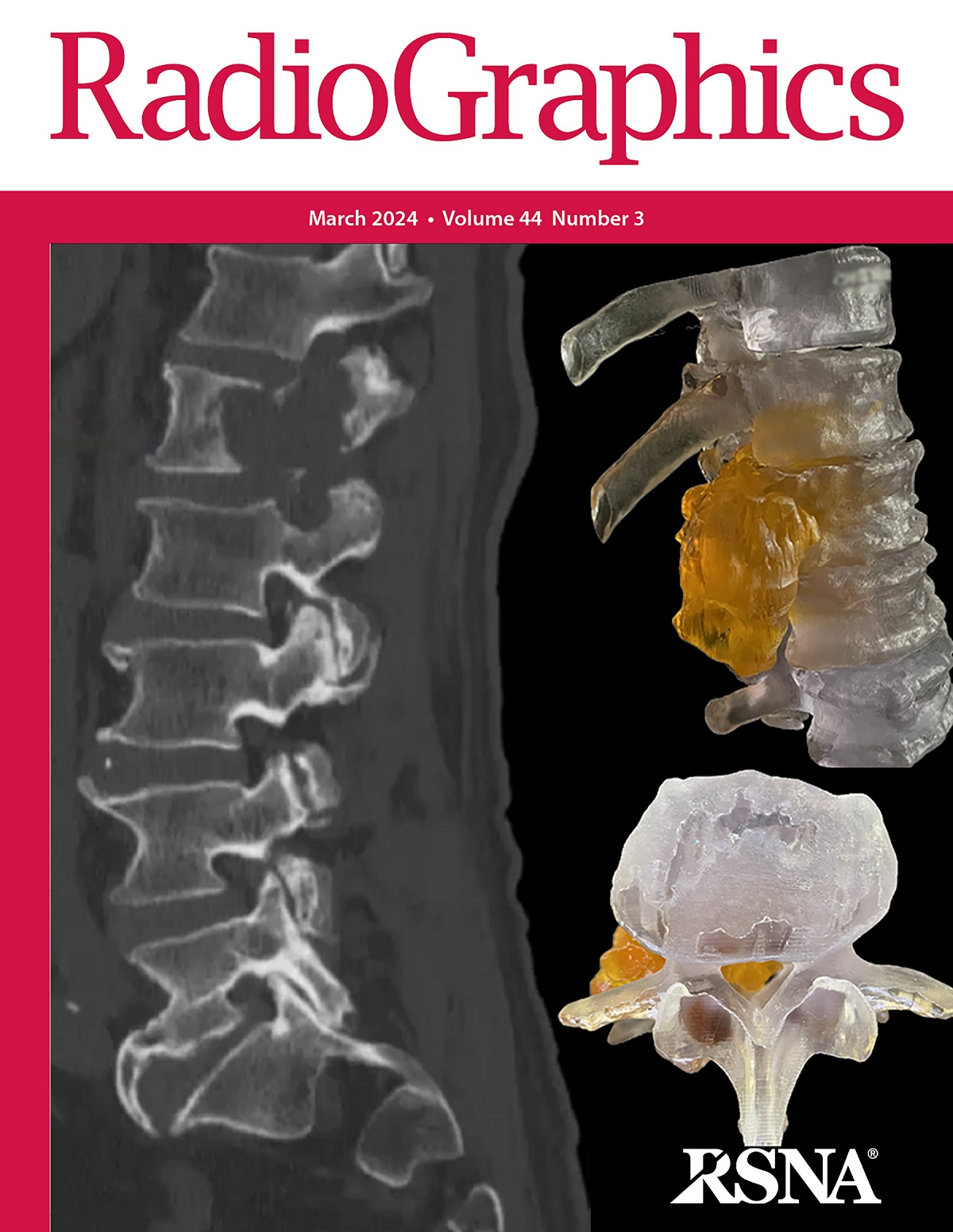求助PDF
{"title":"表现为扭转的不常见实体的成像特征。","authors":"Akihiro Nakamata, Mitsuru Matsuki, Yuriko Watanabe, Ryoma Kobayashi, Nana Fujii, Naoki Kunitomo, Yuko Otake, Hiroyuki Fujii, Kohei Hamamoto, Harushi Mori","doi":"10.1148/rg.230101","DOIUrl":null,"url":null,"abstract":"<p><p>Torsion is the twisting of an object along the axis, and various structures (organs and tumors) in the body can twist. Torsion causes initial lymphatic and venous outflow obstruction, leading to congestive edema, enlargement, venous hemorrhagic infarction, and surrounding edema. It can also cause subsequent arterial obstruction depending on the degree of torsion, leading to ischemia, infarction, necrosis, gangrene, and surrounding inflammation. Therefore, in several cases of torsion, immediate surgical intervention is required to improve blood flow and prevent serious complications. Clinical manifestations of torsion are often nonspecific and can affect individuals of varying ages and sex. Imaging plays an important role in the early diagnosis and management of torsion. Multiple imaging modalities, including US, radiography, CT, and MRI, are used to evaluate torsion, and each modality has its specific characteristics. The imaging findings reflect the pathophysiologic mechanism: a twisted pedicle (whirlpool sign), enlargement of the torsed structures, reduced blood flow, internal heterogeneity, and surrounding reactive changes. The whirlpool sign is a definitive characteristic of torsion. In some cases, despite poor internal enhancement, capsular enhancement is observed on contrast-enhanced CT and MR images and is considered to be associated with preserved capsular arterial flow or capsular neovascularization due to inflammation. Radiologists should be familiar with the pathophysiologic mechanisms, clinical characteristics, and imaging characteristics of torsion in various structures in the body. Since other articles about common organ torsions already exist, the authors of this article focus on the uncommon entities that manifest with torsion. <sup>©</sup>RSNA, 2024.</p>","PeriodicalId":54512,"journal":{"name":"Radiographics","volume":"44 7","pages":"e230101"},"PeriodicalIF":5.2000,"publicationDate":"2024-07-01","publicationTypes":"Journal Article","fieldsOfStudy":null,"isOpenAccess":false,"openAccessPdf":"","citationCount":"0","resultStr":"{\"title\":\"Imaging Features of Uncommon Entities That Manifest with Torsion.\",\"authors\":\"Akihiro Nakamata, Mitsuru Matsuki, Yuriko Watanabe, Ryoma Kobayashi, Nana Fujii, Naoki Kunitomo, Yuko Otake, Hiroyuki Fujii, Kohei Hamamoto, Harushi Mori\",\"doi\":\"10.1148/rg.230101\",\"DOIUrl\":null,\"url\":null,\"abstract\":\"<p><p>Torsion is the twisting of an object along the axis, and various structures (organs and tumors) in the body can twist. Torsion causes initial lymphatic and venous outflow obstruction, leading to congestive edema, enlargement, venous hemorrhagic infarction, and surrounding edema. It can also cause subsequent arterial obstruction depending on the degree of torsion, leading to ischemia, infarction, necrosis, gangrene, and surrounding inflammation. Therefore, in several cases of torsion, immediate surgical intervention is required to improve blood flow and prevent serious complications. Clinical manifestations of torsion are often nonspecific and can affect individuals of varying ages and sex. Imaging plays an important role in the early diagnosis and management of torsion. Multiple imaging modalities, including US, radiography, CT, and MRI, are used to evaluate torsion, and each modality has its specific characteristics. The imaging findings reflect the pathophysiologic mechanism: a twisted pedicle (whirlpool sign), enlargement of the torsed structures, reduced blood flow, internal heterogeneity, and surrounding reactive changes. The whirlpool sign is a definitive characteristic of torsion. In some cases, despite poor internal enhancement, capsular enhancement is observed on contrast-enhanced CT and MR images and is considered to be associated with preserved capsular arterial flow or capsular neovascularization due to inflammation. Radiologists should be familiar with the pathophysiologic mechanisms, clinical characteristics, and imaging characteristics of torsion in various structures in the body. Since other articles about common organ torsions already exist, the authors of this article focus on the uncommon entities that manifest with torsion. <sup>©</sup>RSNA, 2024.</p>\",\"PeriodicalId\":54512,\"journal\":{\"name\":\"Radiographics\",\"volume\":\"44 7\",\"pages\":\"e230101\"},\"PeriodicalIF\":5.2000,\"publicationDate\":\"2024-07-01\",\"publicationTypes\":\"Journal Article\",\"fieldsOfStudy\":null,\"isOpenAccess\":false,\"openAccessPdf\":\"\",\"citationCount\":\"0\",\"resultStr\":null,\"platform\":\"Semanticscholar\",\"paperid\":null,\"PeriodicalName\":\"Radiographics\",\"FirstCategoryId\":\"3\",\"ListUrlMain\":\"https://doi.org/10.1148/rg.230101\",\"RegionNum\":1,\"RegionCategory\":\"医学\",\"ArticlePicture\":[],\"TitleCN\":null,\"AbstractTextCN\":null,\"PMCID\":null,\"EPubDate\":\"\",\"PubModel\":\"\",\"JCR\":\"Q1\",\"JCRName\":\"RADIOLOGY, NUCLEAR MEDICINE & MEDICAL IMAGING\",\"Score\":null,\"Total\":0}","platform":"Semanticscholar","paperid":null,"PeriodicalName":"Radiographics","FirstCategoryId":"3","ListUrlMain":"https://doi.org/10.1148/rg.230101","RegionNum":1,"RegionCategory":"医学","ArticlePicture":[],"TitleCN":null,"AbstractTextCN":null,"PMCID":null,"EPubDate":"","PubModel":"","JCR":"Q1","JCRName":"RADIOLOGY, NUCLEAR MEDICINE & MEDICAL IMAGING","Score":null,"Total":0}
引用次数: 0
引用
批量引用


